Protein supplementation of human milk for promoting growth in preterm infants
- PMID: 32964431
- PMCID: PMC8094919
- DOI: 10.1002/14651858.CD000433.pub3
Protein supplementation of human milk for promoting growth in preterm infants
Abstract
Background: Preterm infants require high protein intake to achieve adequate growth and development. Although breast milk feeding has many benefits for this population, the protein content is highly variable, and inadequate to support rapid infant growth. This is a 2020 update of a Cochrane Review first published in 1999.
Objectives: To determine whether protein-supplemented human milk compared with unsupplemented human milk, fed to preterm infants, improves growth, body composition, cardio-metabolic, and neurodevelopmental outcomes, without significant adverse effects.
Search methods: We used the standard search strategy of Cochrane Neonatal to search Cochrane Central Register of Controlled Trials (CENTRAL 2019, Issue 8) in the Cochrane Library and MEDLINE via PubMed on 23 August 2019. We also searched clinical trials databases and the reference lists of retrieved articles for randomised controlled trials and quasi-randomised trials.
Selection criteria: Published and unpublished RCTs were eligible if they used random or quasi-random methods to allocate hospitalised preterm infants who were being fed human milk, to additional protein supplementation or no supplementation.
Data collection and analysis: Two review authors independently abstracted data, assessed risk of bias and the quality of evidence at the outcome level, using GRADE methodology. We performed meta-analyses, using risk ratio (RR) for dichotomous data, and mean difference (MD) for continuous data, with their respective 95% confidence intervals (CIs). We used a fixed-effect model and had planned to explore potential causes of heterogeneity via subgroup or sensitivity analyses.
Main results: We included six RCTs, involving 204 preterm infants. The risk of bias for most methodological domains was unclear as there was insufficient detail reported. Low-quality evidence showed that protein supplementation of human milk may increase in-hospital rates of growth in weight (MD 3.82 g/kg/day, 95% CI 2.94 to 4.7; five RCTs, 101 infants; I² = 73%), length (MD 0.12 cm/wk, 95% CI 0.07 to 0.17; four RCTs, 68 infants; I² = 89%), and head circumference (MD 0.06 cm/wk, 95% CI 0.01 to 0.12; four RCTs, 68 infants; I² = 84%). Protein supplementation may lead to longer hospital stays (MD 18.5 days, 95% CI 4.39 to 32.61; one RCT, 20 infants; very low-quality evidence). Very low quality evidence means that the effect of protein supplementation on the risk of feeding intolerance (RR 2.70, 95% CI 0.13 to 58.24; one RCT, 17 infants), or necrotizing enterocolitis (RR 1.11, 95% CI 0.07 to 17.12; one RCT, 76 infants) remains uncertain. No data were available about the effects of protein supplementation on neurodevelopmental outcomes.
Authors' conclusions: Low-quality evidence showed that protein supplementation of human milk, fed to preterm infants, increased short-term growth. However, the small sample sizes, low precision, and very low-quality evidence regarding duration of hospital stay, feeding intolerance, and necrotising enterocolitis precluded any conclusions about these outcomes. There were no data on outcomes after hospital discharge. Our findings may not be generalisable to low-resource settings, as none of the included studies were conducted in these settings. Since protein supplementation of human milk is now usually done as a component of multi-nutrient fortifiers, future studies should compare different amounts of protein in multi-component fortifiers, and be designed to determine the effects on duration of hospital stay and safety, as well as on long-term growth, body composition, cardio-metabolic, and neurodevelopmental outcomes.
Trial registration: ClinicalTrials.gov NCT01487928 NCT01103219.
Copyright © 2020 The Cochrane Collaboration. Published by John Wiley & Sons, Ltd.
Conflict of interest statement
EA receives a scholarship in the form of a stipend from the University of Auckland as a PhD student.
JB is currently employed by a medical writing company. The preparation of this review took place prior to this employment and her current work is not related to the topic of this review.
JH has partial salary support from research grants from the Health Research Council of New Zealand. The Council has no role in the production of this review. An undirected research grant is pending from Biomed Ltd, Auckland, New Zealand. This company makes dextrose gel.
The methods section of this review is based on a standard template used by Cochrane Neonatal.
Core editorial and administrative support for the 2020 update of this review has been provided by a grant from The Gerber Foundation. The Gerber Foundation is a separately endowed, private foundation, independent from the Gerber Products Company. The grantor has no input on the content of the review or the editorial process.
Figures
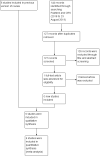
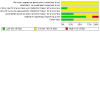
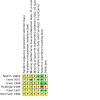
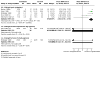
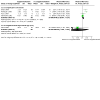
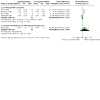
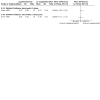
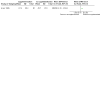
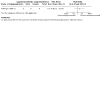
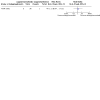
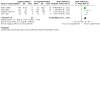
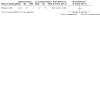
Update of
-
Protein supplementation of human milk for promoting growth in preterm infants.Cochrane Database Syst Rev. 2018 Jun 22;6(6):CD000433. doi: 10.1002/14651858.CD000433.pub2. Cochrane Database Syst Rev. 2018. Update in: Cochrane Database Syst Rev. 2020 Sep 23;9:CD000433. doi: 10.1002/14651858.CD000433.pub3. PMID: 29931679 Free PMC article. Updated.
References
References to studies included in this review
Boehm 1988a {published data only}
-
- Boehm G, Müller DM, Beyreiss K, Räihä NC. Evidence of functional immaturity of the ornithine-urea cycle in very-low-birthweight infants. Biology of the Neonate 1988;54(3):121-5. [DOI: 10.1159/000242842] [PMID: ] - PubMed
Faerk 2001 {published data only}
-
- Faerk J, Petersen S, Peitersen B, Michaelsen KF. Diet, growth, and bone mineralization in premature infants. Advances in Experimental Medicine and Biology 2001;501:479-83. [PMID: ] - PubMed
-
- Faerk J, Petersen S, Peitersen B, Michaelsen KF. Diet and bone mineral content at term in premature infants. Pediatric Research 2000;47(1):148-56. [PMID: ] - PubMed
Greer 1986 {published data only}
-
- Greer FR, McCormick A, Loker J. Increased urinary excretion of inorganic sulfate in premature infants fed bovine milk protein. Journal of Pediatrics 1986;109(4):692-7. [PMID: ] - PubMed
-
- Greer FR, McCormick A. Improved bone mineralization and growth in premature infants fed fortified own mother’s milk. Journal of Pediatrics 1988;112(6):961-9; Erratum in: Journal of Pediatrics 1988; 113(6):1118. [PMID: ] - PubMed
Polberger 1989 {published and unpublished data}
-
- Polberger SK, Axelsson IE, Räihä NC. Amino acid concentrations in plasma and urine in very low birth weight infants fed protein-unenriched or human milk protein-enriched human milk. Pediatrics 1990;86(6):909-15. [PMID: ] - PubMed
-
- Polberger SK, Fex GA, Axelsson IE, Räihä NC. Eleven plasma proteins as indicators of protein nutritional status in very low birth weight infants. Pediatrics 1990;86(6):916-21. [PMID: ] - PubMed
Putet 1987 {published and unpublished data}
Rönnholm 1982 {published data only}
-
- Rönnholm KA, Perheentupa J, Siimes MA. Supplementation with human milk protein improves growth of small premature infants fed human milk. Pediatrics 1986;77(5):649-53. [PMID: ] - PubMed
-
- Rönnholm KA, Simell O, Siimes MA. Human milk protein and medium-chain triglyceride oil supplementation of human milk: plasma amino acids in very low-birth-weight infants. Pediatrics 1984;74(5):792-9. [PMID: ] - PubMed
-
- Rönnholm KA, Sipila O, Siimes MA. Human milk protein supplementation for the prevention of hypoproteinemia without metabolic imbalance in breast milk-fed, very low-birth-weight infants. Journal of Pediatrics 1982;101(2):243-7. [PMID: ] - PubMed
References to studies excluded from this review
Abrams 2014 {published data only}
Barrington 2016 {published data only}
Berseth 2012 {published data only}
-
- Berseth C, Harris C, Mitmesser S. Weight gain in very premature human milk fed infants Is significantly related to protein and non-protein intake. In: Pediatric Academic Societies Annual Meeting; 2012 April 28 - May 1; Boston MA, United States. 2012.
Bhat 2001 {published data only}
-
- Bhat BA, Gupta B. Effects of human milk fortification on morbidity factors in very low birth weight infants. Annals of Saudi Medicine 2001;21(5-6):292-5. [PMID: ] - PubMed
-
- Bhat BA, Gupta B. Effects of human milk fortification on morbidity factors in very low birth weight infants. Annals of Saudi Medicine 2003;23(1-2):28-31. [PMID: ] - PubMed
Bishara 2017 {published data only}
-
- Bishara R, Ng D, Asbury M, Ng E, Unger S, Gibbins S, et al. Nutrient intake and growth of infants enrolled in the donor milk for improved neurodevelopmental outcomes (GTA-DoMINO) trial: comparison to clinical targets. FASEB Journal 2017;31(1 Suppl 1):lb295.
Boehm 1988b {published data only}
-
- Boehm G, Senger H, Muller D, Beyreiss K, Raiha NC. Metabolic differences between AGA- and SGA-infants of very low birthweight. II. Relationship to protein intake. Acta Paediatrica Scandinavica Sep 1988;77(5):642-6. [PMID: ] - PubMed
Ditzenberger 2013 {published data only}
Gathwala 2012 {published data only}
-
- Gathwala G, Shaw CK, Shaw P, Batra R. Effect of fortification of breast milk on the growth of preterm neonates. Eastern Journal of Medicine 2012;17(1):30-5.
Hair 2014 {published data only}
-
- Hair AB, Blanco CL, Moreira AG, Hawthorne KM, Lee ML, Rechtman DJ, et al. Randomized trial of human milk cream as a supplement to standard fortification of an exclusive human milk-based diet in infants 750-1250 g birth weight. Journal of Pediatrics 2014;165(5):915-20. [DOI: 10.1016/j.jpeds.2014.07.005] [PMID: ] - DOI - PubMed
Hayashi 1994 {published data only}
-
- Hayashi T, Takeuchi T, Itabashi K, Okuyama K. Nutrient balance, metabolic response, and bone growth in VLBW infants fed fortified human milk. Early Human Development 1994;39(1):27-36. [PMID: ] - PubMed
Hill 1997 {published data only}
-
- Hill R. Abstracts of podium presentations. Infants and children... proceedings of the Communicating Nursing Research Conference and WIN Assembly held May 1-3, 1997 in Portland, Oregon. Communicating Nursing Research 1997;30:153-6.
Kashaki 2018 {published data only}
-
- Kashaki M, Mazouri A, Bordhar A, Saboute M, Behnamfar Z, Talebi A. Effect of protein supplementation on the growth of infants weighing less than 1,000 grams hospitalized on the neonatal intensive care unit of Akbar Abadi Hospital in Tehran, Iran (2015-2016). Iranian Journal of Neonatology 2018;9(3):49-56. [DOI: 10.22038/ijn.2019.27558.1368] - DOI
Modanlou 1986 {published data only}
-
- Modanlou HD, Lim MO, Hansen JW, Sickles V. Growth, biochemical status, and mineral metabolism in very-low-birth-weight infants receiving fortified preterm human milk. Journal of Pediatric Gastroenterology and Nutrition 1986;5(5):762-7. [PMID: ] - PubMed
Moltu 2013 {published data only}
-
- Moltu SJ, Strommen K, Blakstad EW, Almaas AN, Westerberg AC, Braekke K, et al. Enhanced feeding in very-low-birth-weight infants may cause electrolyte disturbances and septicemia--a randomized, controlled trial. Clinical Nutrition (Edinburgh, Scotland) 2013;32(2):207-12. [DOI: 10.1016/j.clnu.2012.09.004] [PMID: ] - DOI - PubMed
Polberger 1997 {published data only}
-
- Polberger S, Raiha NC, Juvonen P, Moro G, Minoli I. A new human milk fortifier (HMF). A comparison of growth and metabolic indices with human milk protein (HMP) fortification in preterm infants. Pediatric Research 1997;41(4 Pt 2):238A.
Additional references
AAP 2012
AAP Committee on Nutrition 1985
-
- American Academy of Pediatrics Committee on Nutrition. Nutritional needs of low-birth-weight infants. Pediatrics 1985;75(5):976-86. [PMID: ] - PubMed
Agostoni 2010
-
- Agostoni C, Buonocore G, Carnielli VP, De Curtis M, Darmaun D, Decsi T, et al, ESPGHAN Committee on Nutrition. Enteral nutrient supply for preterm infants: commentary from the European Society of Paediatric Gastroenterology, Hepatology and Nutrition Committee on Nutrition. Journal of Pediatric Gastroenterology and Nutrition 2010;50(1):85-91. [DOI: 10.1097/MPG.0b013e3181adaee0] [PMID: ] - DOI - PubMed
Bertino 2012
-
- Bertino E, Nicola PD, Giuliani F, Peila C, Cester E, Vassia C, et al. Benefits of human milk in preterm infant feeding. Journal of Pediatric and Neonatal Individualized Medicine (JPNIM) 2012;1(1):19-24.
Boyd 2007
Brooke 1987
Brown 2016
Chiesa 2008
-
- Chiesa C, Osborn JF, Haass C, Natale F, Spinelli M, Scapillati E, et al. Ghrelin, leptin, IGF-1, IGFBP-3, and insulin concentrations at birth: is there a relationship with fetal growth and neonatal anthropometry? Clinical Chemistry 2008;54(3):550-8. [DOI: 10.1373/clinchem.2007.095299] [PMID: ] - DOI - PubMed
Cibulskis 2015
Claas 2011
Clemmons 2006
Covidence [Computer program]
-
- Veritas Health Innovation Covidence. Version accessed 1 September 2017. Melbourne, Australia: Veritas Health Innovation, 2015. Available at www.covidence.org.
D'Netto 2000
Di Natale 2011
Di Natale 2013
-
- Di Natale C, Di Fabio S. Fortification of maternal milk. Journal of Pediatric and Neonatal Individualized Medicine (JPNIM) 2013;2(2):e020224.
Ehrenkranz 2006
Ehrenkranz 2010
Embleton 2001
-
- Embleton NE, Pang N, Cooke RJ. Postnatal malnutrition and growth retardation: an inevitable consequence of current recommendations in preterm infants? Pediatrics 2001;107(2):270-3. [PMID: ] - PubMed
Freitas 2016
-
- Freitas BA, Priore SE, Lima LM, Franceschini SC. Extrauterine growth restriction: universal problem among premature infants [Restrição de crescimento extrauterino: problema universal entre os prematuros]. Revista de Nutrição, 2016;29(1):53-64.
Ghods 2011
GRADEpro GDT [Computer program]
-
- GRADE Working Group, McMaster University GRADEpro GDT. Version accessed 1 September 2017. Hamilton (ON): GRADE Working Group, McMaster University, 2014. Available at gradepro.org.
Hansen‐Pupp 2011
-
- Hansen-Pupp I, Löfqvist C, Polberger S, Niklasson A, Fellman V, Hellström A, et al. Influence of insulin-like growth factor I and nutrition during phases of postnatal growth in very preterm infants. Pediatric Research 2011;69(5 Pt 1):448-53. [DOI: 10.1203/PDR.0b013e3182115000] [PMID: ] - DOI - PubMed
Hansen‐Pupp 2013
Hay 2009
Hay 2010
Hellström 2016
Higgins 2017
-
- Higgins JPT, Green S, editor(s). Cochrane Handbook for Systematic Reviews of Interventions Version 5.2.0 (updated June 2017). The Cochrane Collaboration, 2017. Available from https://training.cochrane.org/handbook.
Kalhoff 1993
-
- Kalhoff H, Manz F, Diekmann L, Kunz C, Stock GJ, Weisser F. Decreased growth rate of low-birth-weight infants with prolonged maximum renal acid stimulation. Acta Paediatrica 1993;82(6-7):522-7. [PMID: ] - PubMed
Kalhoff 2001
-
- Kalhoff H, Manz F. Nutrition, acid-base status and growth in early childhood. European Journal of Nutrition 2001;40(5):221-30. [PMID: ] - PubMed
Kim 2016
Koletzko 2005
-
- Koletzko B, Goulet O, Hunt J, Krohn K, Shamir R, Parenteral Nutrition Guidelines Working Group, European Society for Clinical Nutrition and Metabolism, European Society of Paediatric Gastroenterology, Hepatology and Nutrition (ESPGHAN), European Society of Paediatric Research (ESPR). 1. Guidelines on Paediatric Parenteral Nutrition of the European Society of Paediatric Gastroenterology, Hepatology and Nutrition (ESPGHAN) and the European Society for Clinical Nutrition and Metabolism (ESPEN), Supported by the European Society of Paediatric Research (ESPR). Journal of Pediatric Gastroenterology and Nutrition 2005;41(Suppl 2):S1-87. [PMID: ] - PubMed
Kuschel 2000a
Kuschel 2000b
Lapillonne 2013
Lo 2002
-
- Lo HC, Tsao LY, Hsu WY, Chen HN, Yu WK, Chi CY. Relation of cord serum levels of growth hormone, insulin-like growth factors, insulin-like growth factor binding proteins, leptin, and interleukin-6 with birth weight, birth length, and head circumference in term and preterm neonates. Nutrition 2002;18(7-8):604-8. [PMID: ] - PubMed
Manz 1997
-
- Manz F, Kalhoff H, Remer T. Renal acid excretion in early infancy. Pediatric Nephrology (Berlin, Germany) 1997;11(2):231-43. [DOI: ] - PubMed
Okamoto 2007
Reich 2010
Review Manager 2014 [Computer program]
-
- Nordic Cochrane Centre, The Cochrane Collaboration Review Manager 5 (RevMan 5). Version 5.3. Copenhagen: Nordic Cochrane Centre, The Cochrane Collaboration, 2014.
Ronholm 1986
-
- Rönnholm KA, Perheentupa J, Siimes MA. Supplementation with human milk protein improves growth of small premature infants fed human milk. Pediatrics 1986;77(5):649-53. [PMID: ] - PubMed
Schanler 1999
-
- Schanler RJ, Shulman RJ, Lau C. Feeding strategies for premature infants: beneficial outcomes of feeding fortified human milk versus preterm formula. Pediatrics 1999;103(6 Pt 1):1150-7. [PMID: ] - PubMed
Schanler 2005
Schünemann 2013
-
- Schünemann H, Brożek J, Guyatt G, Oxman A, editor(s). Handbook for grading the quality of evidence and the strength of recommendations using the GRADE approach (updated October 2013). GRADE Working Group, 2013. Available from gdt.guidelinedevelopment.org/app/handbook/handbook.html.
Sisk 2007
Socha 2011
-
- Socha P, Grote V, Gruszfeld D, Janas R, Demmelmair H, Closa-Monasterolo R, et al. Milk protein intake, the metabolic-endocrine response, and growth in infancy: data from a randomized clinical trial. American Journal of Clinical Nutrition 2011;94(6 Suppl):1776S-84S. [DOI: 10.3945/ajcn.110.000596] [PMID: ] - DOI - PubMed
Srinivasan 2010
Su 2014
Thoene 2014
Tonkin 2014
Tudehope 2013
Underwood 2013
Weber 2001
-
- Weber A, Loui A, Jochum F, Bührer C, Obladen M. Breast milk from mothers of very low birthweight infants: variability in fat and protein content. Acta Paediatrica 2001;90(7):772-5. [PMID: ] - PubMed
WHO 1995
-
- World Health Organization. Physical status: the use and interpretation of anthropometry. Report of a WHO Expert Committee. who.int/nutrition/publications/growth_physical_status/en/ (accessed 2 February 2018).
Yeung 2003
References to other published versions of this review
Amissah 2018
Publication types
MeSH terms
Substances
Associated data
Grants and funding
LinkOut - more resources
Full Text Sources
Other Literature Sources
Medical

